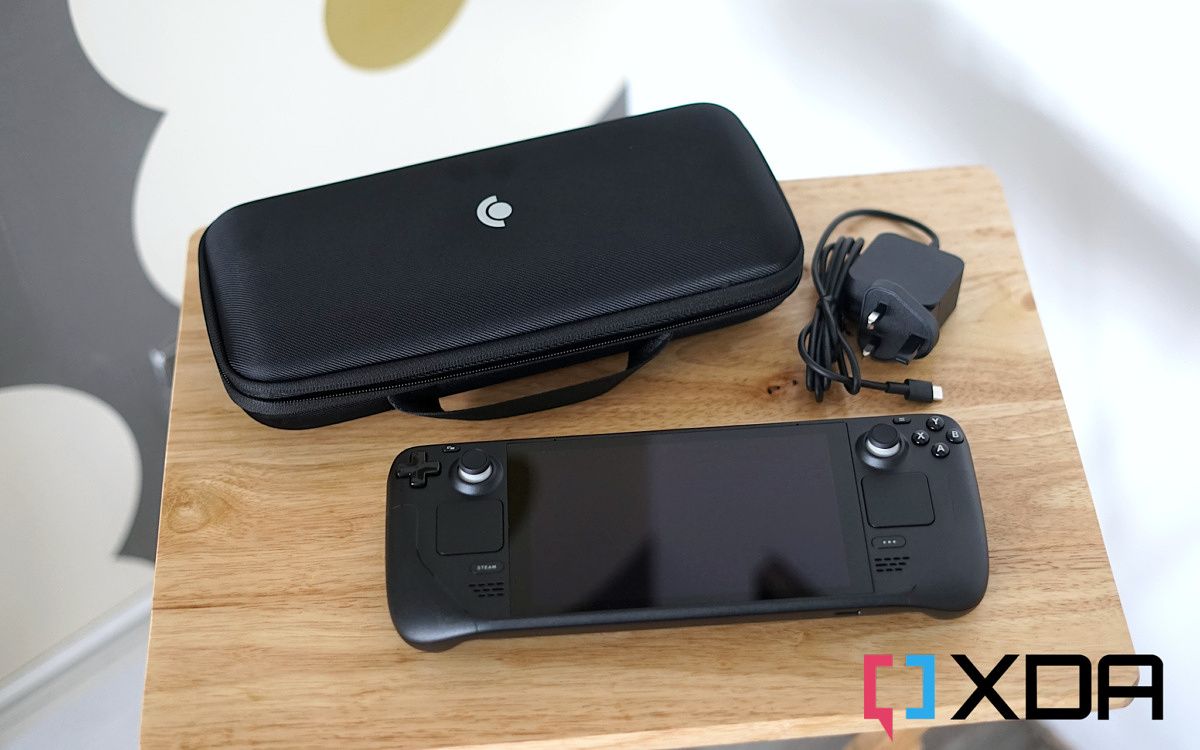Valve has made SteamOS 3.3.2 available to the public through its stable channel, along with an updated Steam Client. The new update brings bug fixes, enhancements to the Steam Deck's docked mode, and other quality-of-life improvements. There's a lot to unpack with the latest update, so let's get to it.
SteamOS 3.3.2 brings enhancements to the console's docked mode, adding a new resolution and refresh rate option in the Display settings menu, specifically when the device is connected to an external display. The new update also brings a new fail-safe feature that will allow the console to avoid outputting problematic resolutions and refresh rates. In addition, the console will now output much quicker when connected to an external display. As far as fixes go, the console will now properly switch its aspect ratio and resolution when connected to an external display, will have better performance at lower refresh rates, and will improve controls when using a physical mouse.
Along with external display improvements and fixes, the new update will also bring some general fixes, like balancing the volume of the boot tone across all console models, fixing random haptic occurrences, improving sensitivity on the console's trackpads, and more. You can check out the rest of the general improvements and fixes listed below.
-
-
- Fixed a crash in Red Dead Redemption 2
- Improved frame pacing when compositing (such as when FSR is enabled)
- Improved touch / de-touch detection speeds
- Modified USB descriptors to support controller navigation in EFI menu at boot
- Fixed controller firmware update applying on every boot
- Fixed a scenario where an SD Card format operation could fail
-
In addition to the new SteamOS update, the Steam Client was also updated and includes a long list of improvements and fixes. The Steam Client will now have better performance when rendering the home screen, cloud sync will no longer occur when offline, haptics when booting has been fixed, and auto focus on chat textboxes. The new update also includes enhancements to the controls, along with improvements for custom boot videos, which were tested in past beta releases. Since the list is quite extensive, the contents of the update have been listed below verbatim from Steam Deck's news portal.
-
Docked Mode
- Added a toggle allowing Steam Deck to automatically control the display resolution for external displays. When toggled on, Steam Deck will automatically adjust the resolution for best performance on higher resolution displays.
- Steam Deck now keeps track of refresh rate and FPS limit settings independently for internal and external displays
- Disabled refresh rate switching via the quick access menu for external displays by default. Alternative refresh rates are still accessible via the resolution dropdown in Settings->Display.
- Added a toggle to developer settings to re-enable refresh rate switching in the quick access menu for external displays. (Please note that the Steam Deck’s built-in display was validated to support the full range of refresh rates available in the slider, but for arbitrary external displays we can't provide a guarantee that the resolution + refresh rate combination will be functional. This can lead to a scenario where the external display doesn’t display an image, so there isn’t an easy way to undo the change. Here be dragons, we don't recommend turning this setting on.)
-
Steam Input
- Controller configurations now automatically switch to be per-device when multiple of the same controller are connected at once
- Virtual menu previews in the Configurator now highlight the appropriate button when navigating to its associated command in the command list
- Reduced occurrence of double-activations on Soft Press on Touch Pads and Sticks.
- Fixed scaling of the virtual hotbar menu preview in the Configurator
- Fixed an issue where "Disabled" would be listed multiple times the dropdown options for modes
- Fix an issue where booting into offline mode in desktop would result in unresponsive controller inputs until the "stay offline" dialog was clicked.
- Fix an issue with setting command settings inside a modeshift
- Fixed a bug where switching the active controller in the configurator could lose unsaved changes
- Fixed a crash with editing the mode settings for an input (e.g. joystick)
- Fixed a crash when setting a trigger input to "Disabled" in an action set layer
- Fixed a crash when loading some Steam Input configs.
-
Steam Input: FlickStick
- Reduced update rate from 240hz to 120hz to reduce instances of maxed out mouse movement between game frames
- Added a "Slap Back" check so that the stick does not accidentally invoke an opposite-side turn when snapping home aggressively
- Any remaining Snap Angle is doled as the stick returns to zero. This further reduces "mouse movement spikes"
- Tweaked Inner Radius Default to be lower
- Fixed Dampening Value not being used with the correct ranges
-
Custom boot videos
- Steam Deck will now look for a custom boot video and/or a suspend animation in ~/.steam/root/config/uioverrides/movies/
- Please note that you'll need to create this folder first
- You’ll need webm file format, no need to truncate the video, no need to mess with css
- Play custom boot animations in full screen
Valve has been doing an excellent job on the software front these past few months, releasing numerous updates to its beta and preview channels. The firm has also met and exceeded expectations when it comes to shipping its console. The company is currently in its final stretch of fulfilling its pre-orders, with only a few months remaining. The firm has promised that it will fulfill all of the original pre-orders placed by the end of the year. If you've been curious about the console and wanted to pre-order one, now is the time. The wait for a console currently stands at around a month, which means if you order, you should also have your console by the end of the year.
Source: Steam Deck

